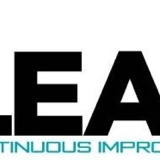Information
-
Document No.
-
Location
-
Unit Number
-
Conducted on
-
Prepared by
-
Picture of Unit.
Engine
-
1.1 Coolant level: Insure level to base of fill neck, check "services required" if you add more than a half gallon
-
1.2 Engine oil level: Insure oil level is at full mark on the dip stick. Replace at 300hrs. Or when ever contamination is present.
-
1.3 Hydraulic oil level: Fill tank to appropriate level. Drain any condensation before filling.
-
1.4 Air intake piping: no unplugged holes, loose or missing clamps, & no visible leaks.
-
1.5 Cooling fan belt condition & tension: Inspect for cracks, frays, & excessive stretch or wear. Replace if needed.
-
1.6 Radiator: no leaks, no fin contamination to cause air flow restriction, steam clean as requires, shroud intact and mounting bolts tight.
-
1.7 Oil & Fuel filter condition: Replace at 300 hrs or when rusted, leaking, dented, or bad fuel is present.
-
1.8 Fuel, Air,& Hyd. Tank condition: Inspect all for rust, dents, cracks, leaks, vents, caps, and valve defects.
-
1.9 Air, Fuel, Hyd. Hoses: Inspect all hoses for damage, wear, leaking, excessive rust, or cracks. Replace as needed.
-
1.10 Diesel level: Insure there in not < than 1/2 of a tank. Drain any condensation.
-
1.11 Engine oil pressure: Not less than 15 psi with engine at idle, not less than 50 psi with engine running full throttle.
-
1.12 Gauges & Indicators: Must work from zero to full gauge range within limits of system being measured.
-
1.13 Hyd Quick couplings: Check for leaks, excessive corrosion, non-standard size/style will require repair or replacement and retest.
-
1.14 Air compressor @ full charge: 115-125 psi, must hold post SD for minimum of 30 minutes with valves open, not > than 10% loss allowed.
-
1.15 Air intake filter: Indicator should be below 20 in. Vacuum with engine running at full throttle, replace filter if indicator is in red area or if 25 in. Or more of vacuum is measured with engine running at full throttle, retest after replacing filter.
-
1.16 Coolant temperature: OEM spc of 200 deg. Operating temperature.
-
1.17 Check for exhaust leaks: Check for any leaks and /or defects. Repair or replace if needed
-
1.18 Fuel/Oil/Coolant Leaks: Observe very closely all hoses, piping, couplings, pump, and radiator for visible leaks of principle engine liquids, none are to be allowed.
-
1.19 Air compressor mounting: Bolts tightened to OEM specs.
-
1.20 Fan hub: No bearing deflection allowed, check for deflection with belt tension release, replace worn bearings, and grease with no more than 3 shots.
-
1.21 Guards and covers: Radiator, drive shafts intact, in place properly fastened, inspected for structural integrity.
-
1.22 Exhaust brackets/guards: Inspect for rips, tears, loose or missing bindings or blankets must be replaced.
-
1.23 Air Intake Vacuum restrictor: Indicator should be reset to 0 vacuum with engine off, replace defective vacuum indicator, and recheck vacuum after replacing indicator.
-
1.24 Fuel pressure: 50-60 psi @secondary filter. Check while engine is running at full throttle.
-
1.25 Throttle operation: Idle to full rev functionality via twist type air assist control valve.
-
1.26 Engine kill system: "normal" kill button when depressed must immediately shut off fuel air supply killing engine the engine completely.
-
1.27 Engine kill system: "Emergency" kill button when depressed must immediately shut off air supply and killing the engine completely.
Transmission
-
2.1 U-joints/drive train: All bolts present and tight, no excess slack or play, apply grease to each joint.
-
2.2 Transmission oil level: Must be at full mark on dip stick
-
2.3 Transmission service: Charge spin filter @ 600 hrs or 6 months. Charge oil & filter @ 1200 hrs or 12 months or when ever contaminated.
-
2.4 Thrust bearings: Inject fresh grease with only two shots max.
-
2.5 Shifter linkage bushings: Inject fresh grease with only two shots max.
N2 Converter
-
3.1 Suction filter: pull plug and inspect contaminates, clean or replace if contaminated or when cold ends changed.
-
3.2 Boost pump: No leaks on seals or connections, free rotation, no abnormal vibration or noise.
-
3.3 Gear box: Oil to full mark, change when contaminated or 500 hours. 80-90 wt
-
3.4 Intermediate housing: No oil leaks through cross head seals, replace seals if leaking.
-
3.5 Warm end oil: Oil 1/2 in sight glass, change if contaminated or 500 hrs. 30 wt
-
3.4 N2 plumbing: Secured, proper connections, no signs of wear or damage, repair or replace if leaking.
-
3.5 Cold ends: Installed properly, no leaks during/ After cool down and testing.
-
3.6 Discharge valves: Verify positive action, proper closure, no leaks, repair or replace if leaking
-
3.7 BP & HP pump throttle controls: Must allow complete stop, operate freely in/out, lock down set working, adjust or replace if not.
-
3.8 Brass Hammer caps: Clean, free of oil or grease, in place and tightened.
-
3.9 Vaporizer, Radiator, Oil Cooler: No fin contamination to cause air flow restriction, steam clean as required.
-
3.10 Control panel: Securely mounted, controls and gauges properly mounted, gauges operational from 0 to full range with in limits being measured, flow meter functional.
-
3.11 Suction Screen: Remove screen from unit, clean and reassemble.
Trailer
-
4.1 Landing gear: greased no cracks on pins or pads
-
4.2 Slack adjusters: greased
-
4.3 All lights: Insure all lights are functional and working properly
-
4.4 Tires: in good condition
Miscellaneous
-
5.1 Equipment labeling: IPS decals on all skids and in good condition
-
5.2 Fire extinguisher: mounted stocked and current inspection.
-
5.3 Tie down straps: 2 each stocked
-
5.4 Spill control: properly stock with absorbent pad and emergency containment kit
-
5.6 Verify that pump tractor, trailer and control cabin are clean. If not clean them
Certification
-
Addition comments or concerns not other wise addressed.
-
Operator signature
-
Supervisor Signature

















